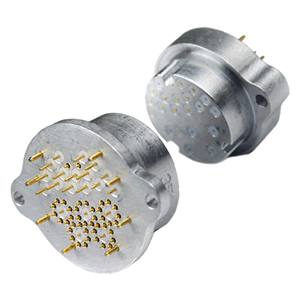How to Specify Spring Probe Connectors
Custom connectors that utilize spring probe technology offer compliance, blind mating, and space savings. Gina Prieto of Smiths Connectors offers advice on how to specify spring probe connectors.
 Custom connectors utilizing spring probe technology offer a number of advantages over other contact types: compliance, blind mating, and space savings. Most often overlooked, however, is their design flexibility. Spring probe connectors can be designed to suit a wide range of applications. While we offer some guidance here, speaking with an applications engineer from an experienced vendor is the best way to avoid overlooking the best fit for a given requirement.
Custom connectors utilizing spring probe technology offer a number of advantages over other contact types: compliance, blind mating, and space savings. Most often overlooked, however, is their design flexibility. Spring probe connectors can be designed to suit a wide range of applications. While we offer some guidance here, speaking with an applications engineer from an experienced vendor is the best way to avoid overlooking the best fit for a given requirement.
When considering a spring probe interconnect, it is useful to start by selecting the best method by which the connector will engage. Because spring probes can be wiped into position, which provides inherent benefits in self-cleaning and controlled contact resistance, a wide range of engagement methods is possible. In addition to mating straight on, bayonets, dovetail, and toe-in are also valid approaches. The engagement method will determine the mating target of the spring probes. Probes mate well to pads on a printed circuit board, target pins, or contact pads on the exterior of any device.
Once the engagement method is determined, the physical arrangement of contacts should be considered; the space allocated to the connector will determine the maximum length of the contacts, and the X-Y envelope and number of lines will dictate their pitch. Probes can be very low-profile (1.75 mm compressed) and very dense (0.4 mm), but probes should be as large as space permits for maximum robustness and performance.
The method by which the probes will be terminated is also flexible. Probes can be terminated to cables or printed circuit boards. They can be mounted by thru-hole or surface-mount solder techniques, or compression-mounted against pads to create a solderless termination.
The environment of the connector should be considered next. Harsh service conditions such as corrosives, shock and vibration, and extreme temperatures should be considered; while probes can be made to withstand a very wide range of environments, sacrifices in design must sometimes be made to accommodate this resilience. Water ingress through the connector should be considered; IP68 mated and unmated is possible, but requires careful forethought. Service life, defined both over time and the number of mating cycles, will also influence contact selection.
Finally, signal performance requirements must be defined. Current and voltage, if significant, play a role. The maximum tolerable voltage drop across the connector will determine how stable the contact resistance of the probes must be, which greatly influences design. Signal integrity of high-speed digital or high-frequency analog channels can be managed by control of the characteristic impedance.
Spring probes offer great design versatility, but taking full advantage of this requires careful selection and often custom probe designs.
For more information on spring probe connectors and the suppliers that offer them, visit the Connector Buyers Guide.
Gina Prieto is a product line manager, spring probes, for Smiths Connectors.







